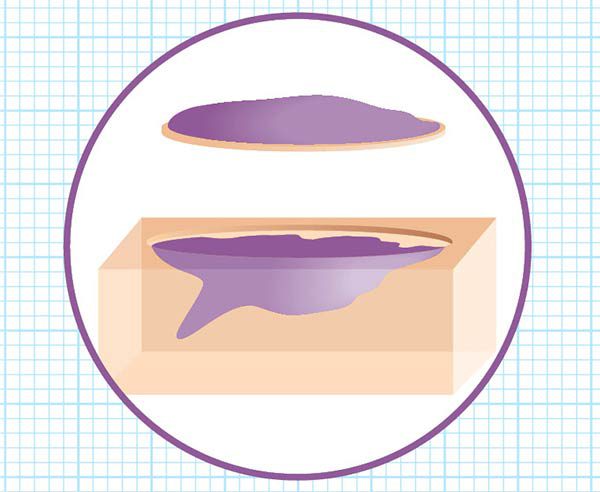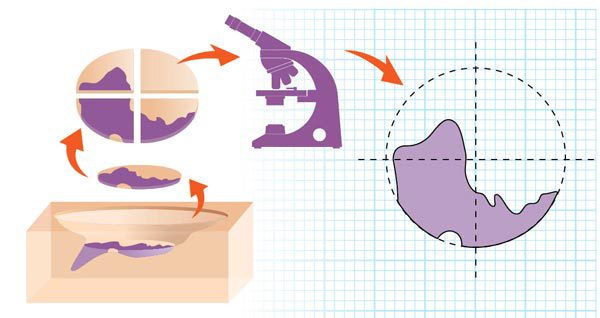MOHS SURGERY
About one in five Americans receives a diagnosis of skin cancer at some point during their lifetime. Though serious, thanks to modern treatment techniques, such as Mohs Surgery, skin cancer can be managed and, in many cases, reversed. At Annexus Dermatology & Aesthetics in Orange City, Florida, the team of practitioners provide diagnosis and treatment of skin cancer. Our board certified dermatologist, Dr. Neil Sandhu, MD, FAAD is a Certified Mohs Micrographic Surgeon, offering the latest technologies to treat skin cancer. To schedule an appointment, book online or call the office and speak with a friendly staff member today.
Call Today! 386-628-DERM (3376)
MOHS SURGERY AT Annexus DERMATOLOGY
ExpertS in Skin Cancer and Skin CaNCER SURGERY
As experts in their field and leaders in skin cancer and skin care in DeLand, Orange City, and Central Florida, Dr. Sandhu and Annexus Dermatology are frequent guests in dermatologic educational videos. Watch below as Dr. Sandhu collaborates with the American Society for Mohs Surgery explains the latest and most advanced options for skin cancer treatment.
What Types of Skin Cancer Surgeries are there?
What is mohs surgery?
For What Skin Cancer Treatments is Mohs Surgery Best Suited?
What is the Mohs Surgery Process?
For What Skin Cancer Types is Mohs Surgery Most Beneficial?
For What Skin Cancer Types is Mohs Surgery Most Beneficial?
What Are Skin Cancer Cure Rates?
Mohs Surgery Q&A
Mohs Surgery at Annexus Dermatology & Aesthetics
Annexus Dermatology & Aesthetics provides Mohs surgery at our Orange City, Florida location. Our Mohs surgeon, Neil Sandhu, MD, FAAD, is a Board Certified Dermatologist and is fellowship trained in Mohs Micrographic surgery.
what is mohs surgery
Mohs surgery is the most advanced and effective treatment for certain types of skin cancer that combines the surgical removal of the tumor with the immediate microscopic examination of the tumor and underlying diseased tissue. This process allows for the immediate identification, removal, and examination of the entire tumor and roots layer-by-layer until the cancer is completely gone.
Mohs surgery has been shown to be a highly effective treatment for certain types of skin cancer, with a cure rate of up to 99% for certain cancers. Mohs surgery provides the most precise method for removal of all cancerous tissue, while sparing the greatest amount of healthy tissue. For this reason, Mohs surgery typically results in a significantly smaller surgical defect and less noticeable scarring, as compared to other methods of skin cancer treatment.
who performs the procedure?
Mohs surgery is performed by doctors who are specially trained to fulfill three roles:
- as the surgeon who removes the cancerous tissue
- as the pathologist who analyzes the lab specimens
- as the surgeon who closes or reconstructs the wound
what type of training does a mohs surgeon receive?
After completing a residency in dermatology, which typically lasts 3-4 years, a physician can apply to participate in a fellowship training program approved by American College of Mohs Surgery (ACMS) in Micrographic Surgery & Dermatologic Oncology (Mohs). The fellowship training lasts one to two years, depending on the particular program, with the purpose of safeguarding standards by ensuring that fellows-in-training are properly trained and acquire the necessary expertise to perform Mohs surgery. This process includes advanced training in pathology to analyze the skin tissue and determine that it is free of skin cancer cells and extensive training in post-Mohs reconstruction to minimize scarring. At Annexus Dermatology & Aesthetics, our board certified dermatologist, Dr. Neil Sandhu, is fellowship trained and certified in Mohs Micrographic Surgery.
what are the advantages of mohs surgery?
- Efficient, cost-effective treatment: At Annexus Dermatology & Aesthetics, Mohs Surgery is done in a single-visit, scheduled as outpatient surgery at our Orange City, Florida office. Only local anesthesia is needed to numb the skin prior to surgery, and lab work is done on-site
- Precise results: Dr. Neil Sandhu examines 100% of the tumor margins in the office. This technique spares healthy tissue and leaves the smallest scar possible
- The highest cure rate: Mohs Surgery offers up to 99% cure rate for a skin cancer that has not been treated before. For a skin cancer that has recurred after a previous treatment, Mohs Surgery offers up to a 94% cure rate.
what happens during mohs surgery?
The procedure is done in stages, all in one visit at our Annexus Dermatology & Aesthetics Orange City, Florida office, while the patient waits between each stage. After removing a layer of tissue, the surgeon examines it under a microscope in an on-site lab. If any cancer cells remain, the surgeon knows the exact area where they are and removes another layer of tissue from that precise location, while sparing as much healthy tissue as possible. The doctor repeats this process until no cancer cells remain.
Step 1: Examination and prep. Depending on the location of your skin cancer, you may be able to wear your street clothes, or you may need to put on a gown. Dr. Sandhu examines the spot where you had your biopsy and may mark it with a pen for reference. He positions you for best access, which may mean sitting up or lying down. A surgical drape is placed over the area. If your skin cancer is on your face, that may mean you can’t see what’s happening, but the doctor talks you through it. The surgical area is injected with a local anesthesia, which numbs the area completely. You stay awake throughout the procedure.

Step 2: Top layer removal. Using a scalpel, Dr. Sandhu removes a thin layer of visible cancerous tissue. Some skin cancers may be “the tip of the iceberg,” meaning they have roots or extensions that aren’t visible from the surface. The lab analysis, which comes next, will determine that. Your wound is bandaged temporarily and you can relax while the lab work begins.

Step 3: Lab analysis. Dr. Sandhu cuts the tissue into sections, color codes them with dyes and draws a map of the surgical site. In the lab, a technician freezes the divided tissue, then cuts very thin horizontal slices like a layer cake. The slices are placed on microscope slides, stained and covered. This meticulous process takes time.
Step 4: Microscopic examination. Using a microscope, Dr. Sandhu examines all the edges and underside of the tissue on the slides and, if any cancer cells remain, he marks their location on the map. He then lets you know whether you need another layer of tissue removed.

Step 5: Second layer removal. Back in the operating room, Dr. Sandhu injects more anesthesia if needed and removes another layer of skin, precisely where the cancer cells remain, based on the map. Then, while you wait, the lab work begins again. This entire process is repeated as many times as needed until there are no more cancer cells.
Step 6: Wound repair. Once the site is clear of all cancer cells, the wound may be left open to heal or Dr. Sandhu may close it with stitches. This depends on its size and location. In some cases, a wound may need reconstruction with a skin flap, where neighboring tissue is moved into the wound, or possibly a skin graft. In some cases, your Mohs surgeon may coordinate the repair of your wound with another specialist such as a plastic surgeon, oculoplastic surgeon or hand surgeon. In most instances, however, our Mohs surgeon, Dr. Sandhu, or our surgical physician assistant, will repair the wound immediately after obtaining clear margins.
Step 7: Finishing up. If more than one or two rounds are needed, the entire process can take up to several hours, so be prepared for that. It’s worth it, though, because this precise technique has the highest cure rate of any treatment method and can save the greatest amount of healthy tissue, leaving the smallest scar possible. Carefully follow your doctor’s instructions for wound care, scar care and follow-up to achieve the best outcome.
is mohs surgery right for me?
Mohs surgery is the gold standard for treating many basal cell carcinomas (BCCs) and squamous cell carcinomas (SCCs), including those in cosmetically and functionally important areas around the eyes, nose, lips, ears, scalp, fingers, toes or genitals. Mohs is also recommended for BCCs or SCCs that are large, aggressive or growing rapidly, that have indistinct edges, or have recurred after previous treatment.
does mohs surgery leave a scar?
All surgical procedures have the potential for some degree of visible scarring. The appearance of the post-Mohs procedure scar depends on various factors including the location and size of the final surgical defect, the patient’s individual skin characteristics, and available reconstruction options. A benefit of the tissue-sparing nature of the Mohs technique is to produce the minimum possible surgical defect, thus benefiting the resultant scar. The procedure may allow for smaller and less noticeable scars than other skin cancer removal options. Your Mohs surgeon may be able incorporate suture lines into the patient’s natural skin lines and folds. Most scars improve in appearance naturally over time, and future scar revision techniques may employed if necessary.
will mohs surgery be covered by my medical insurance plan?
Most insurance plans (including Medicare) will cover Mohs surgery. Contact your insurance company directly to learn more about your specific plan coverage.
If you’re concerned about your risk of skin cancer or are needing treatment for an existing skin cancer, we welcome you to schedule an appointment at Annexus Dermatology & Aesthetics. Call the office and speak with a friendly staff member or book a consultation online today.


